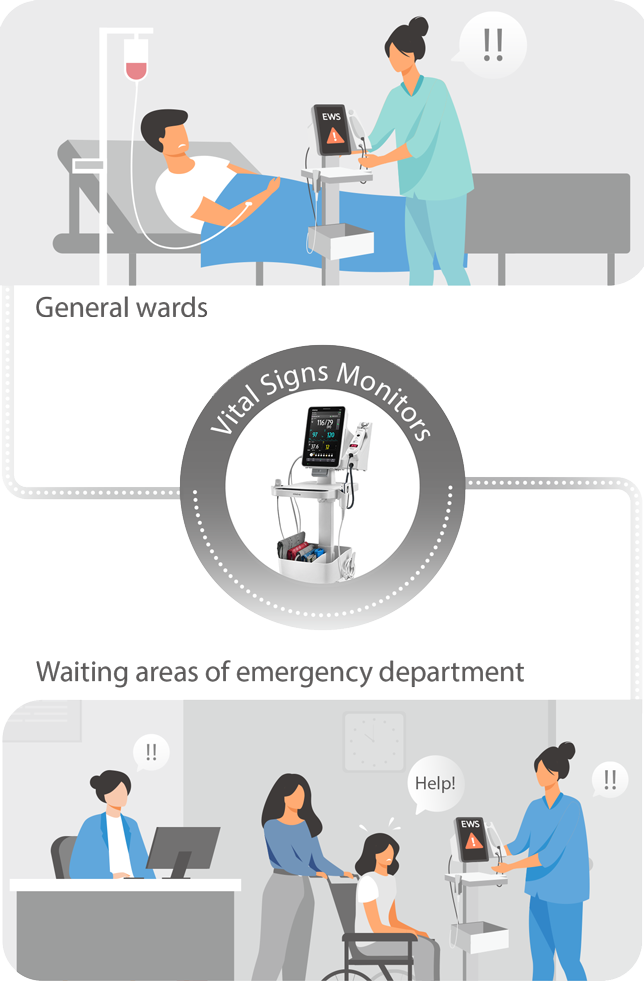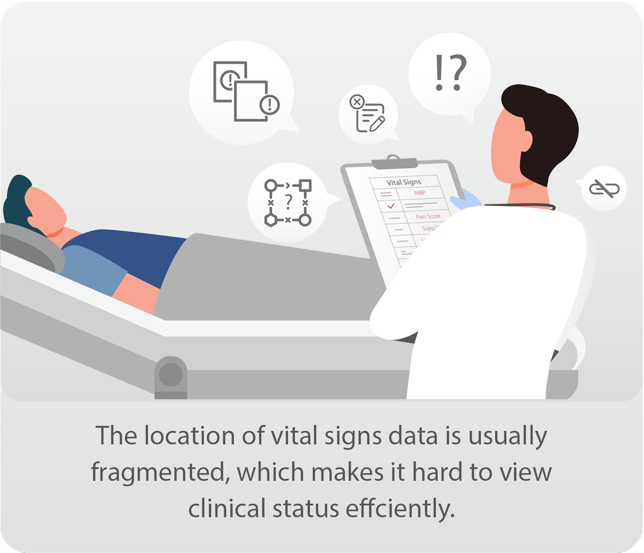Spot-check scenarios can be high-risk as well


Most inadvertent cases might actually be preventable

Why is it hard to identify deteriorating patients?
Infrequent, incomplete or incorrect vital signs data

No integration of spot-check data

How to improve the detection of patient deterioration?
To ensure the early detection of deterioration, the Early Warning Scores (EWS) were created to define the degree of patients’ illness based on their physiological and non-physiological parameters.
VS Series EWS Solution

Mindray's Vital Signs Workstation
offers comprehensive EWS Solution
to solve problems above.
Innovative automatic features:
For precise vital signs data and less spot-check workload
With automatic measurement and documentation,
manual errors can be greatly reduced.

Timely and user-friendly:
For patient-centric care and simplified workflows
Automatic score calculation that helps to get EWS scores quickly and easily
Intuitive display for better understanding of patient status and quicker action
Customizable profile to meet hospital's guideline and departments' requirements

Full connectivity:
For comprehensive patient status and timely diagnosis
Easy data entry and access

Capture patient data at a glance

With an EWS Dashboard at the CMS,
the spot-check data in general wards can
be integrated together.

With an EWS Trends View and spot-check reminder,
the timely vital signs monitoring can be ensured.
Better patient management throughout the hospital

With innovative designs and technologies, the VS Series Vital Signs workstation provides clinicians with true picture of patient deterioration, helping to deliver patient-centric care and ensuring patient safety under spot-check scenarios.
To learn more about Mindray’s VS Series Vital Signs Monitors, please
visit:
here

References
[1] Naeem N, Montenegro H. Beyond the intensive care unit: a review of
interventions aimed at anticipating and preventing in-hospital
cardiopulmonary arrest.
[2] Nolan JP, Soar J, Smith GB, Gwinnutt C, Parrott F, Power S, et al.
Incidence and outcome of in-hospital cardiac arrest in the United
Kingdom National Cardiac Arrest Audit.
[3] Ludikhuize J, Smorenburg SM, de Rooij SE, de Jonge E.
Identification of deteriorating patients on general wards; measurement
of vital parameters and potential effectiveness of the Modified Early
Warning Score. J Crit Care.
[4] Franklin C, Mathew J. Developing strategies to prevent inhospital
cardiac arrest: Analyzing responses of physicians and nurses in the
hours before the event.
[5] Vincent J-L, Einav S, Pearse R, Jaber S, Kranke P, Overdyk FJ, et
al. Improving detection of patient deterioration in the general
hospital ward environment.
[6] Stevenson JE, Israelsson J, Nilsson GC, Petersson GI, Bath PA.
Recording signs of deterioration in acute patients: The documentation
of vital signs within electronic health records in patients who
suffered in-hospital cardiac arrest.
